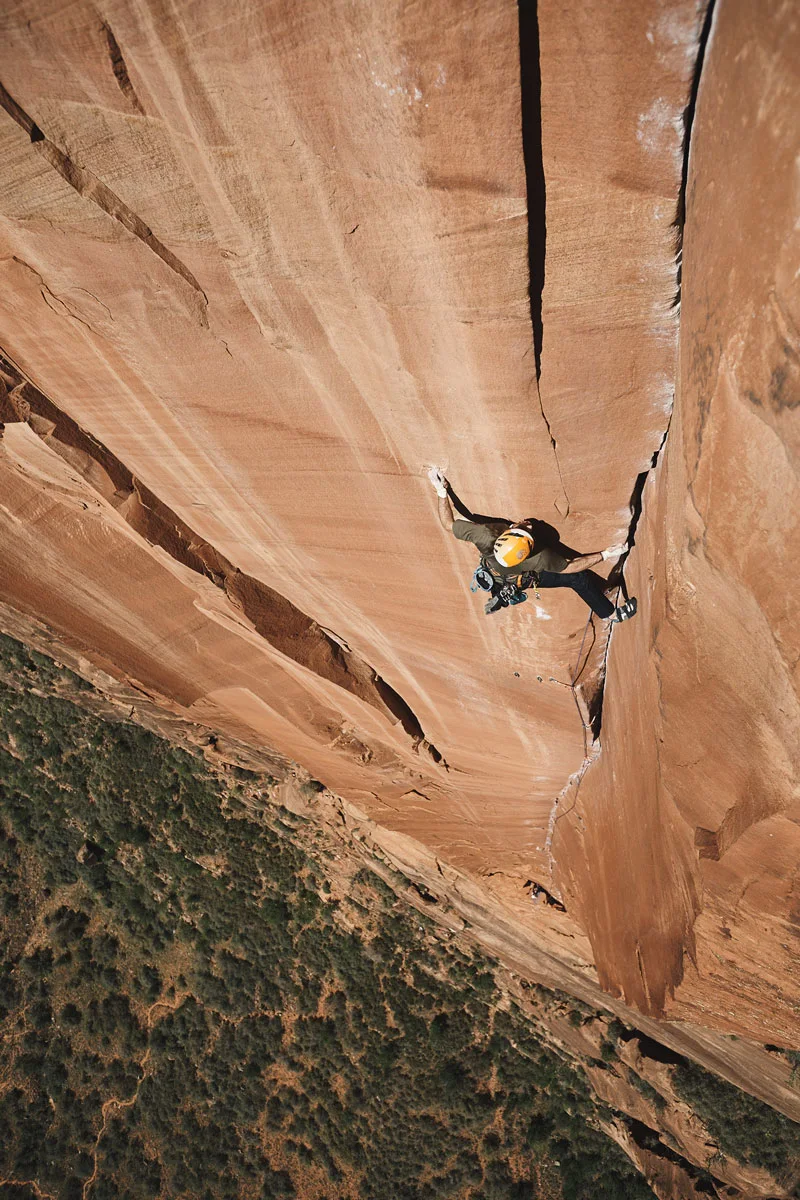The popularity of rock climbing has surged in the past few years. We have films like Free Solo and The Dawn Wall to thank for that, as well as the sport's inclusion in the Olympics. As a result, climbing imagery is everywhere. But when people see photos of a person standing on a tiny ledge or scaling up an overhang wall on impossible crimps, they often overlook the fact that there's another person behind those images. Québec-born photographer Francois Lebeau is often that person–dangling on a fixed line of rope off to the side as the strongest climbers in the world scale impossible cliff faces.
As a youth, Lebeau started climbing at the age of 15 while transitioning away from competing on Canada's national track and field team for javelin. Within climbing, he quickly became enamored by the technicality and power of the sport, and it didn't take long before his passion for climbing merged with his other long-term hobby, photography.
Lebeau began by taking photographs at local crags—between his own climbs—before documenting well-known climbers started broadening his horizons. In the years since, he's witnessed and photographed some rock climbing's most impressive historical moments, many of which are documented in Lebeau's book, Climbing Rock, which documents climbing destinations throughout North America.
Recently, we caught up with Lebeau to talk about those early days, his pivotal choice to prioritize photography over being a climber, why rock climbing photography is particularly tricky, and much more.

Ethan Pringle on Moonlight Butress in Zion and Cover of Lebeau's Book Climbing Rock
What first inspired you to merge your passions of climbing and photography?
At some point, my sister brought me to the climbing gym and I fell in love immediately. I was in the gym and they were blasting Radiohead and I remember thinking, this is sick. I worked at Allez Up in Montreal for seven years and it became a second home from ages 23-28. That is how I developed my community around Montreal.
I have been doing photography since I was 10 years old. My mom gave me a film camera and I started by [photographing] birds through the windows when we were going to a cottage back home. My uncle who was a photographer took me under his wing (funnily enough his name was Francois as well and we had the same birthday). He showed me how to print in a darkroom and develop film at a very young age.
Through my teenage years, I kept doing photography but very loosely and not climbing-related. I always liked to have a camera with me just to document my climbing trips casually. I was studying cinema back in Montreal, but I ended up applying to a photography program and that was around the same time I got into climbing.
For my final school project, I did it about climbing. I printed three big-size black and white images. That is how I started climbing photography. I became obsessed with climbing and photography. It was my outlet for creativity.
How did you transition to photographing climbing outside?
My first was in Horse Pens 40 and I was filming everything. I made a movie but just for friends, nothing professional at that time. In 2008 I went to the Red River Gorge for the first time. I spent a lot of time climbing there between 2008 and 2012. In 2012, I met a bunch of professional climbers. I was basically not climbing and that was the year I understood I needed to pick [between climbing and photography]. Before, I was climbing and shooting at the same time. It was very annoying. In between my burns, I was cleaning my hands, jugging lines, and taking photos. Then I would come back down and try to climb but it was hard.

















